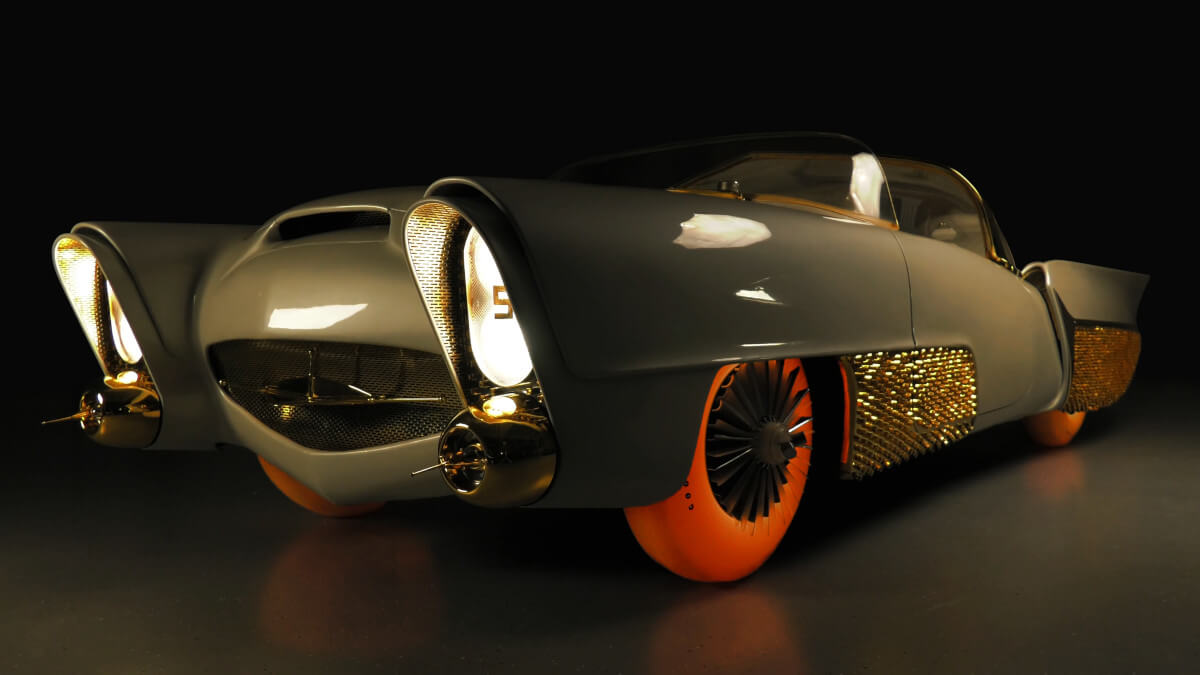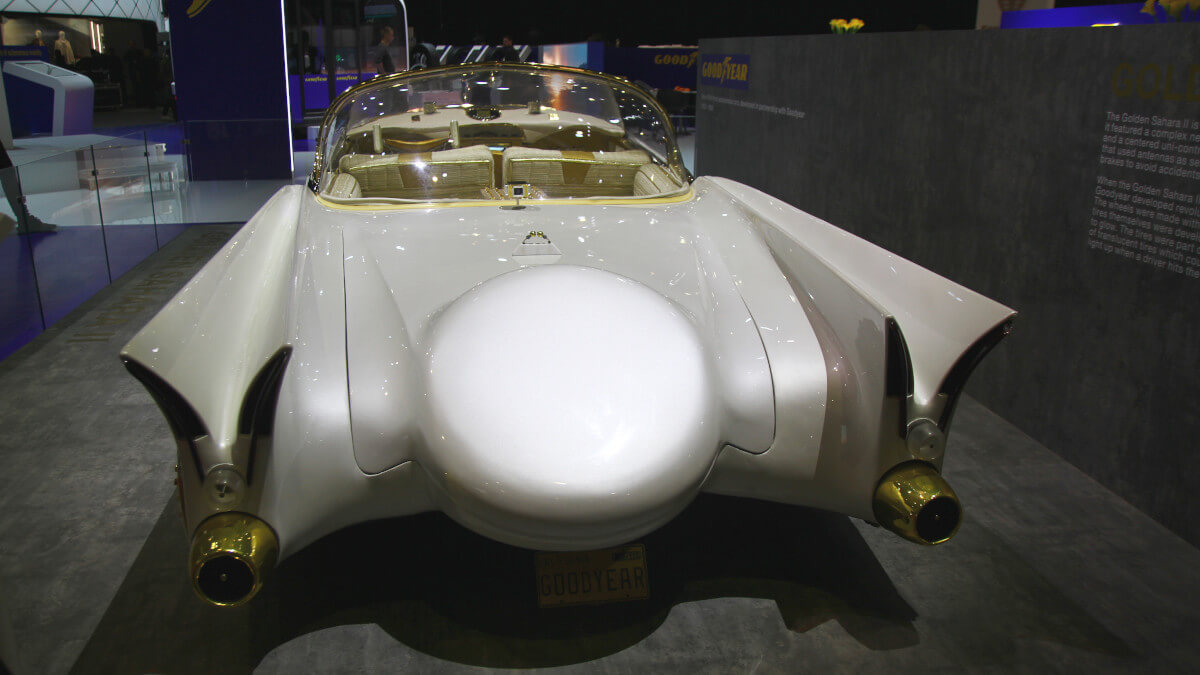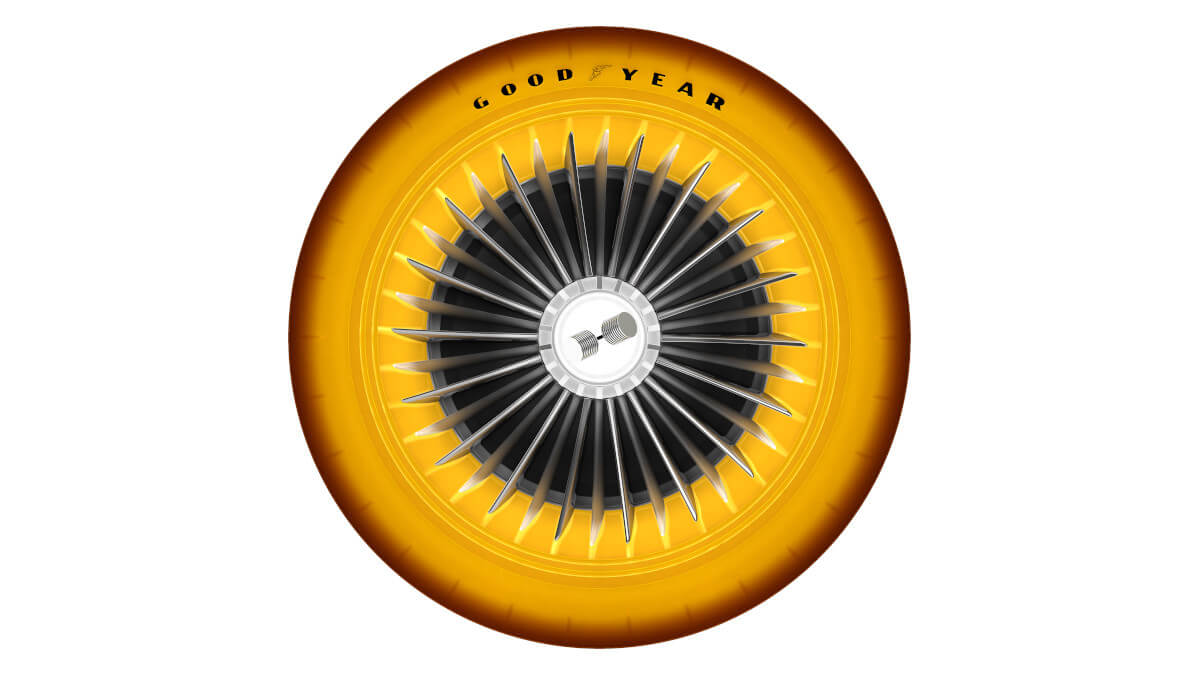Golden Sahara 2
According to various manufacturers, autonomously driving cars with various assistance systems are the desirable product of the coming years – ideally combined with electric drive, of course. However, all these so-called innovations aren’t new. While electric drive existed as early as 1899, some inventors were thinking about driver assistance systems as early as the 1930s. After World War 2, many concept vehicles provided visions of the future, some of which didn’t go into series production until may decades later. In addition to major car manufacturers and design houses, some freelance designers also provided sensational vehicles.
Joystick like in an airplane and remote control
At the end of the 1950s, George Barris and Jim Street were among those. They created the Golden Sahara 2 on the basis of an accident car. Visually, the car was clearly based on aeronautical design with suggested jet engine outlets, split tail fins and a glazed dome above the passengers. To contrast the white paint with ground fish scales for the pearl effect, Barris and Street incorporated gold-plated attachments and ornamentation. With this vehicle, they provided a test vehicle for a variety of electrical systems to various companies in the United States. This began with a joystick and buttons in place of the removable steering wheel and pedals. Sensors were to trigger emergency braking if the driver didn’t do so himself. In addition, the car could be controlled remotely from outside. Radio and TV reception or the car phone could be activated via voice control.




































Extensively restored
One special detail of the Golden Sahara 2 has never gone into series production. Together with Goodyear, tires were illuminated from the inside. On the one hand, these were intended to improve the visibility of the car in bad weather and at night. On the other hand, the tires were also supposed to light up during heavy breaking maneuvers. The outer casing was made of Neothane, a translucent synthetic rubber. Ultimately, the Golden Sahara 2 was able to shine as a star at various car shows, but disappeared into obscurity. Towards the end of the 1960s, Jim Street parked it in a garage. From his estate, the Klairmont Kollection car museum in Chicago was able to acquire the vehicle in 2018 via the auction house Mecum. The long time it had been parked had left its mark and necessitated a restoration. Together with Speakeasy Customs & Classics, this work took place. Goodyear contributed new tires. The unique vehicle was back in the spotlight for the first time at the 2019 Geneva Motor Show.
Images: Goodyear, Klairmont Kollection, Matthias Kierse
Sie sehen gerade einen Platzhalterinhalt von Standard. Um auf den eigentlichen Inhalt zuzugreifen, klicken Sie auf den Button unten. Bitte beachten Sie, dass dabei Daten an Drittanbieter weitergegeben werden.
Weitere Informationen



